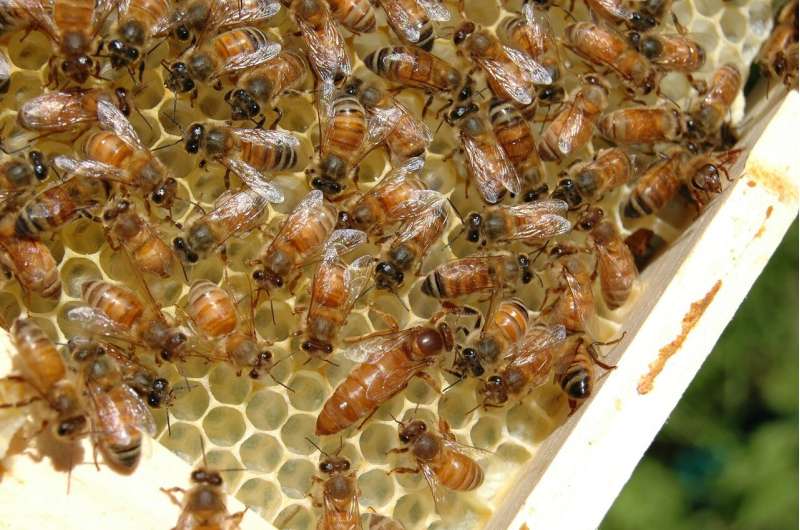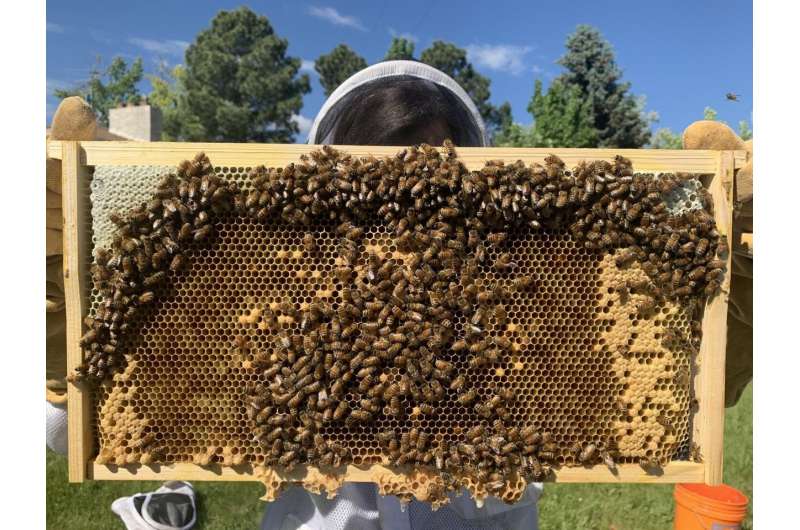Credit: Pixabay/CC0 Public Domain
A team of researchers from the U.S., Japan, Germany, and the Netherlands reports that honeybees use a series of cascading scenting behaviors to locate their queen. In their paper published in Proceedings of the National Academy of Sciences, the group describes their study of honeybees using observational and machine learning techniques and what they discovered.
Prior research has shown that honeybees form coherent swarms, which means that all of the members of the swarm must have some mechanism for keeping track of what is going on with everyone else. Research has also suggested that the queen is the hub of such activity; thus, other bees would need to be able to communicate with her somehow. Doing so would appear to be relatively easy for those bees who are near the queen, but what about those that are more distant? In this new effort, the researchers sought to find the answer to this question.
To get a general sense of how bees behave in their swarm, the researchers observed 6,600 of them in action, being careful to note activities that would require some degree of communication. Observation of the bees was done using high-speed cameras and then replaying the video. The researchers also taught a machine-learning algorithm to recognize certain behaviors in the swarm and then used its processing power to further analyze the behavior of the bees. They then used what they had learned to model the activity of the bees.
The researchers found that the bees have developed a unique method for communication—they use fanning behaviors to push pheromones toward other bees. Even more interesting, they have developed a means for synchronizing their behavior—they engage in a series of fanning behaviors using their wings to blow pheromones around. One bee will blow pheromones to a nearby peer, which will turn around and blow the pheromones to the next bee, and so on, until all of the bees get the message. The result is a hive-wide communications network with the queen serving as the central hub.
Researcher shows off a honeycomb at the apiary on the CU Boulder campus. Credit: Peleg Lab
The researchers suggest the behavior of the bees serves as a landmark example of collective behavior. The communication network they manage allows the swarm to remain coherent even as older members die or are killed and new members join.
More information: Dieu My T. Nguyen et al. Flow-mediated olfactory communication in honeybee swarms, Proceedings of the National Academy of Sciences (2021). DOI: 10.1073/pnas.2011916118
Journal information: Proceedings of the National Academy of Sciences
© 2021 Science X Network

























